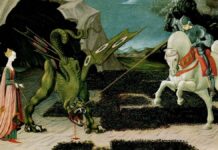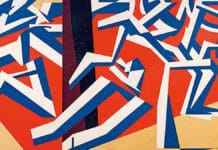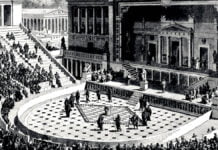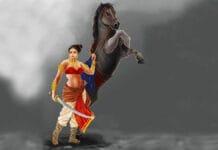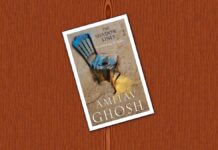In a folk narrative of any culture, there are always both romantic and realistic elements. Generally, the description is romantic with realism lurking within it. Thus, Pather Panchali by Bibhutibhushan Bandopadhyay is a perfect example of a semblance of both. The novel beautifully paints the life of rural Bengal with minute details. In a way the novel makes the readers acquainted with the diverse culture of rural Bengal, its idiosyncrasies, food habits, religious customs, and superstitions. Again, the most significant aspect that the novel highlights through the depiction of the Ray family is how life endures in absolute poverty and how even in dearth the two children Durga and Opu harp on the simple pleasures of life.
The life of rural Bengal depicted in the novel is free from the humdrum and modernization of city life. The people are poor but they still follow every custom, participate in religious festivals and enjoy life in their way because they are satiated with whatever little they have as their minds are not inflected by greed. The novel is depicted from the point of view of child Opu, his perception of life around him, the strong bond he has with his elder sister Durga, how he learnt from his sister to develop an involvement with the natural world and how he gets psychologically affected after the loss of her sister and departure from Nischindipur to Varanasi. So, the novel also symbolizes the journey of Opu from innocence to experience.
One of the most recurring themes in the novel Pather Panchali is how poor people being thronged by every hardship do not give up the spirit to live and even in most adverse circumstances never shy away from cherishing the little pleasures of life and the thing which gives them hope and keeps them bonded and combats the poverty from which they are suffering is nothing else but love. It is also the portrayal of idyllic village life where people are satisfied with little things. Joy and grief of one family are also shared by the others in the village.
Pather Panchali, on one level though, is a portrayal of the life of the Ray family but the principal character is here Opu. It is how he views life, his bond with sister Durga, his involvement with the outside world, his responses to the acute poverty, the loss of his sister and finally his mental state when the Roy family leaves Nischindipur village and departs for Varanasi. So, the development of the plot in the novel correspondent to the gradual psychological maturity of Opu’s character and the way his mind responds to the changing circumstances.
The two principal incidents in the life of Opu which left a deep impact on his life were first, the death of Durga, his sister and second, his family’s decision to leave the village and for better living depart for Varanasi, which was as big a loss as his sister’s death. First was the loss of human love and second was the loss of his root, the place where he belonged. So, for Opu, life in astute poverty was still enjoyable as he was bonded to the love of his sister and to the nature with which his sister helped develop a bond. But with these losses, he is endowed with deep experience of life which ultimately leads to self-revelation on the part of Opu and he realizes that life moves on and there is no way going back. So, the story is not only a realistic portrayal of poverty in rural life but also a marvellous expression of human feelings and sentiments.
Characters
Shorbojaya
Shorbojaya is the wife of Horihor and the matriarch of the central family. She lives in poverty and does her best to keep her household going while her husband struggles to find work. She has dreams of her own, but she has given up on them to support her family. This responsibility is especially burdensome because Harihar is easily cheated out of money and doesn’t generally make very much. She must keep her children in line and then bear the loss of Durga at the end of the story. Her journey is a burdensome one, in that she is tasked with worrying and fretting about the future of her family. She barely smiles throughout the film and takes on a great deal of stress, often taking this stress out on the elderly Indir and the young Durga.
Horihor
Horihor is the patriarch of the family. He is a priest and also works in any way he can to earn money for his family. He is prone to be cheated out of pay and fears asking his employer for the three months of pay he is owed because he doesn’t want to get fired. He goes away for an extended period to earn money and on his return, he finds that Durga, his daughter, has passed away. He then moves his family from his home that his ancestors have been at for generations to attempt to get out of the massive debts that he has accumulated and to walk away from the life that has disappointed him. In contrast to Shorbojaya, he is largely hopeful throughout the film, believing that things will turn out for the best at any moment, and believing that God has a plan. He desires to be a writer and scholar and to educate his son, but neither dream is realized. By the end of the film, his hopes have been dashed, but he is on his way to a new life.
Durga
The character of Durga is one of the most significant creations of Bibhutibhushan Bandopadhyay. Durga is Horihor and Shorbojaya’s daughter. She is a mischievous, sprightly girl who is filled with life. The readers are bound to be entranced not only by her sheer love of the world but even by her numerous imperfections. She is made especially enchanting because she is such an ordinary and flawed human being. She steals from the neighbours. She is angered by this and hits Opu. She manipulates him and others to get what she wants. She is very much like most other children. After a monsoon sweeps through their village Durga takes sick and eventually dies, causing her family to leave their home. Durga is imaginative and loving, and not as hard-working as her mother would like her to be. She takes pleasure in the small elements of life and is close to her younger brother Opu, with whom she plays daily.
Opu
Opu is presented mainly as the observer. The incidents in the novel about which we read, shape his character. Opu is the youngest child of Horihor and Shorbojaya. When Opu is born, Horihor says he will educate him as he desires to become a writer and pass on his skills to his son. As he is a young boy, he is seen as very closely attached to his sister, Durga. Durga and Opu have a relationship that is typical of an older sister and a younger brother. She teases him but is also affectionate with him. We watch Opu grow to be a young boy who experiences the deaths of his Auntie Indir and his sister Durga before moving away with his mother and father. He has a deep sense of wonder and imagination and looks up to his older sister, Durga.
Indir
Indir is the elderly aunt of the family. She is exceedingly old and her back has curled over in her old age. She gladly accepts gifts from Durga, and Shorbojaya disapproves of their bond, frequently throwing Indir out because she thinks Indir is spoiling her daughter. Indir has nowhere else to go and suffers the hardship of old age and poverty, eventually dying in the forest after Shorbojaya has kicked her out of the ancestral home.















